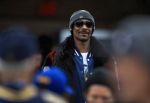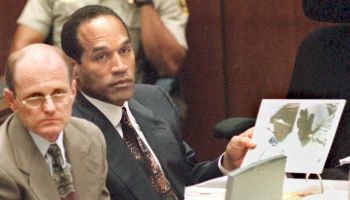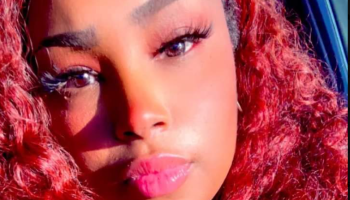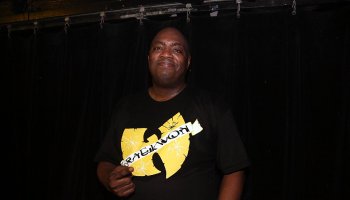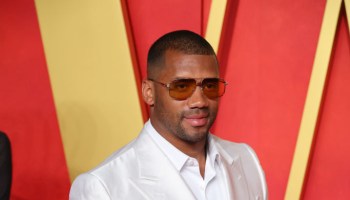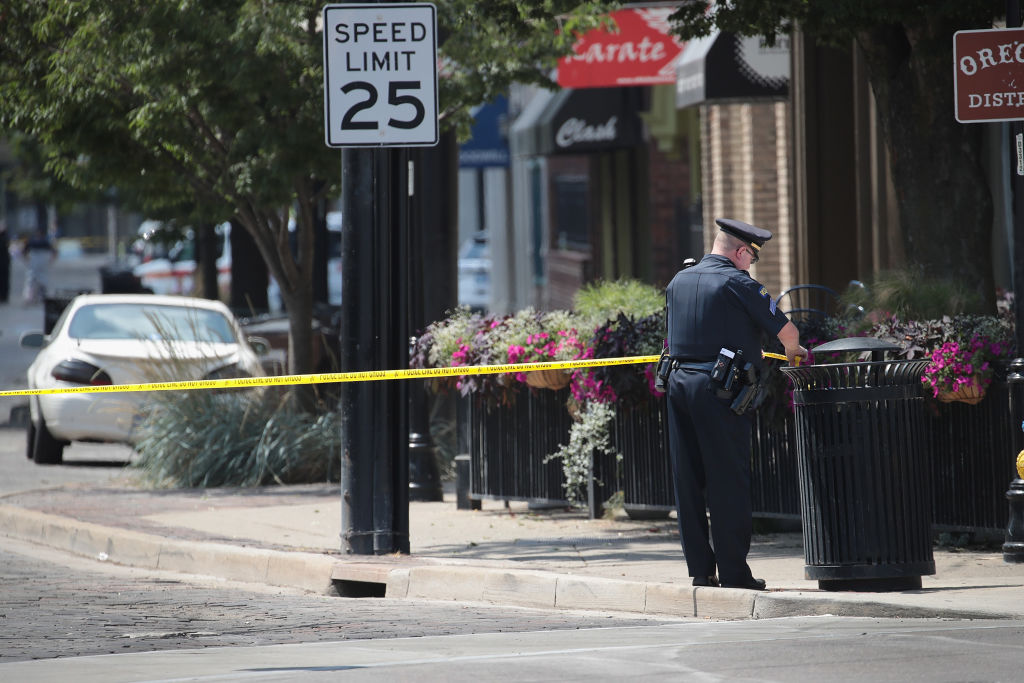
Source: Scott Olson / Getty
I received a DM from my friend around 5 a.m on Aug. 4 asking me if I heard that the bar we used to go to was “shot up.” Still half asleep, I tried to remember which one. Over the course of six hours I would learn that, indeed, it was Ned Peppers, where nine people were shot to death, including one of my former high school classmates in Dayton.
Home would never be the same.
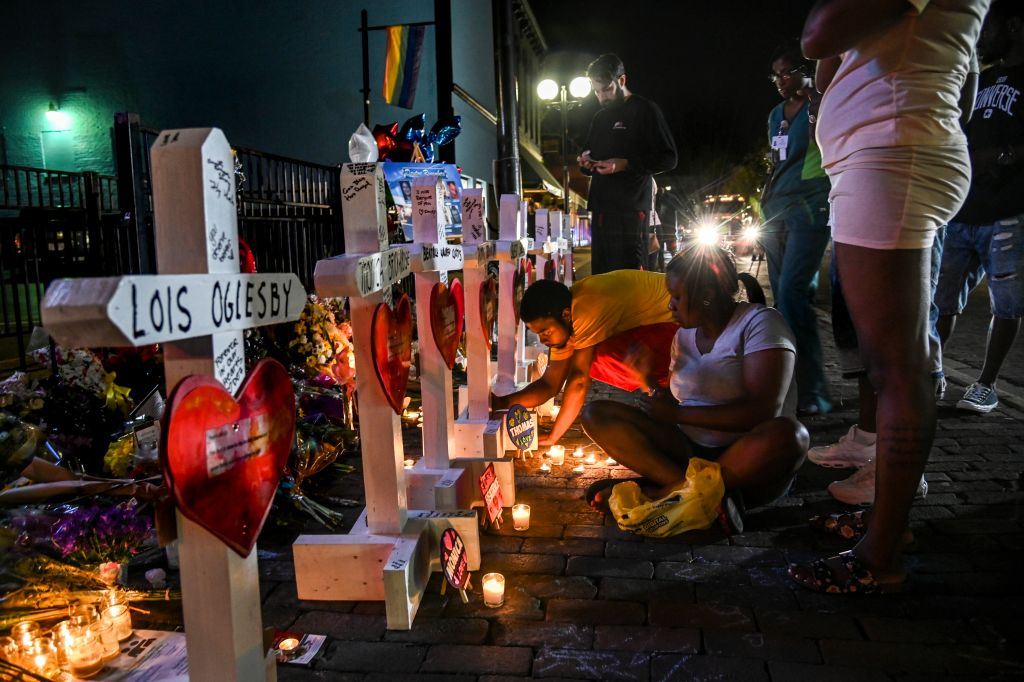
Source: The Washington Post / Getty
Lois Oglesby is a name I usually heard only during a school assembly or saw during my brief stint as a school office aide in 2009. I didn’t know her, not really. But Trotwood-Madison High School is small enough that I had friends and acquaintances who did.
She was among the first of the Dayton, Ohio, mass shooting victims to be announced to the public.
If I closed my eyes, I could just see her at the back of our high school, walking with her group of friends across the red and tan tiles that dominated that rear entrance area. The rest of the school was carpeted, shiny and new. We were the class of 2009, the first group of students to spend our entire education at the new building that the result of passing a levy in 2001.
She and I had eight mutual Facebook friends. And I hate that the first thing I did upon seeing her name and holding that random memory of her in the halls of high school was visit her Facebook page, only to learn that she had shared her last post at 2:39 p.m., the day of the shooting.
Now her page is one of those Facebook pages — the ones filled with comments, condolences and expressions of love.
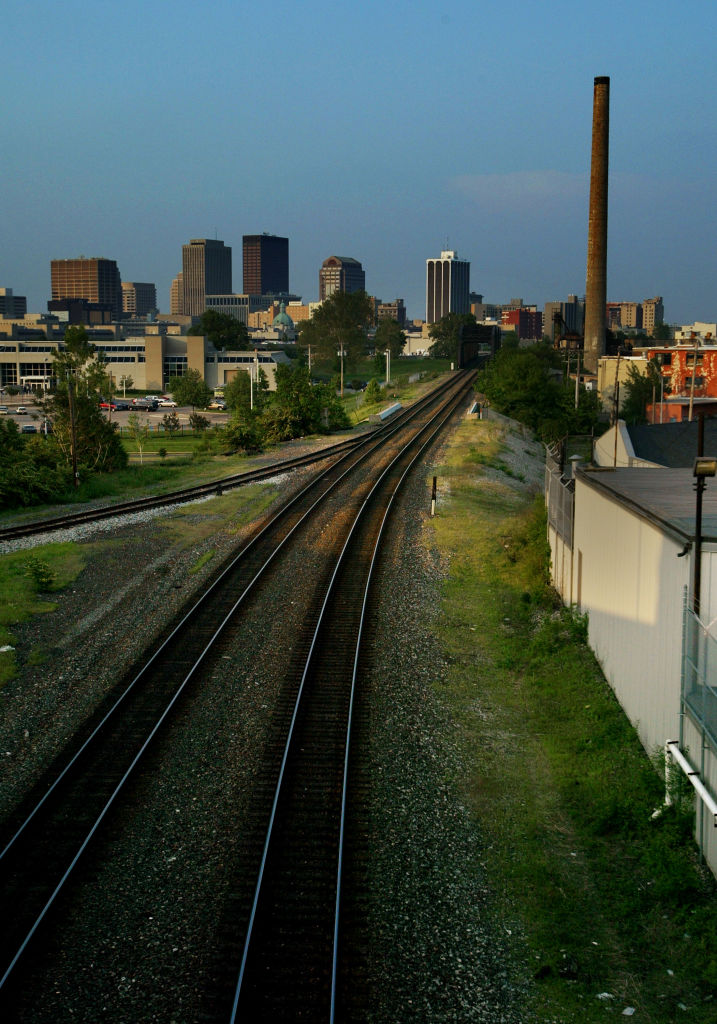
Source: Chris Hondros / Getty
Once when I was maybe nine or 10, my mom drove us through the I-70, I-75, US-35 interchange and mentioned that Dayton lacked a real skyline. It wasn’t the stuff of scenic shots that TV shows often gave for Chicago or New York or even Seattle.
She hated the skyline of Dayton. But my mom hates most things.
My mom had a point, though. Dayton, as far as many city planners could be concerned, was nothing to get excited about. It is what Detroit was, except Detroit had Motown, and Dayton had well … the Wright Brothers (kinda — some people argue the gift of flight belongs to the place where they actually flew the plane, not where they lived).
I mean that to say, Dayton exists in the national consciousness as just another city decimated by the crippling auto industry. General Motors is where many adults, including my mother, worked until factory closings became the norm as a result of the 2008 financial crisis. I remember that year specifically as when one of my aunts was offered either a severance package or to keep her job but experience a massive pay cut. The Black people of Dayton got to celebrate the country’s first African American president while also struggling to survive the economic downturn Republicans left in its wake.
The financial bailout went on to happen. And while some in my generation were beginning 2009 protesting at Occupy Wall Street, I left Dayton, my home, for the first time and moved to a certified big city. Still, I was a Midwestern girl at heart. I said hello, was always polite and generous and still said pop (instead of soda) until 2011, at least.
In the decimation, Dayton became yet another poor Midwestern city as people attempted to transition from higher-paying and more stable factory jobs to whatever service jobs they could find. I, myself, spent my first summer as a working adult behind the counter of the Waffle House near the Dayton Mall, right off of I-75.
Poverty-stricken, and sometimes prey to tornadoes and windstorms, Dayton’s population, throughout it all, has remained a city of more than 140,000 people with about 43% of them Black.
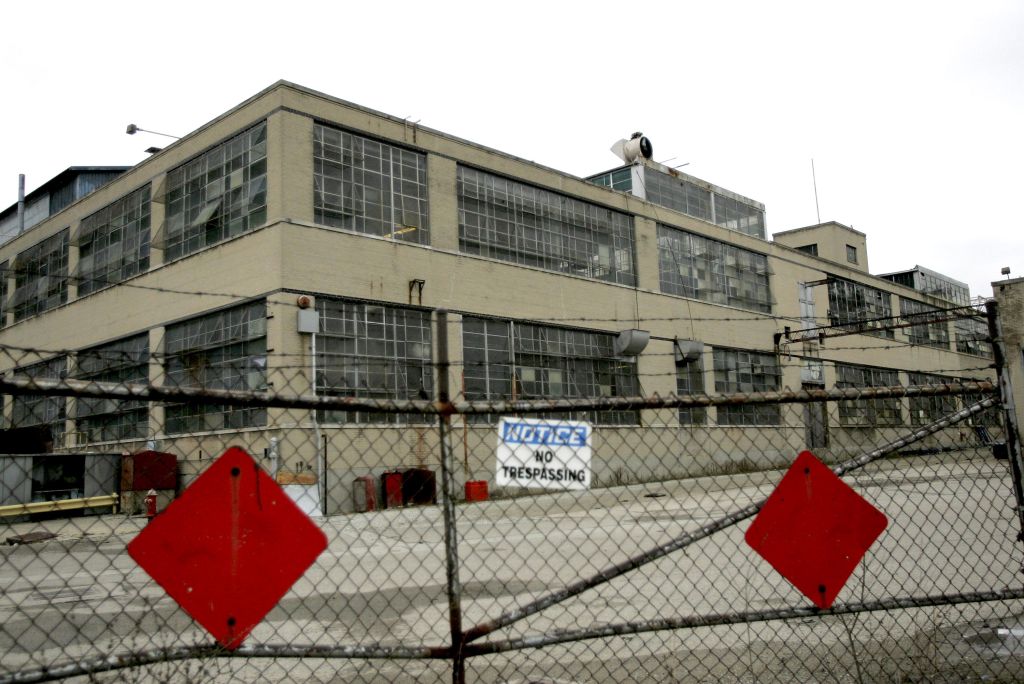
Source: J.D. Pooley/Getty Images / Getty
For me, Dayton is a city of highways, suburbs and downtown. Apartment complexes are developments, not high-rises. We were an outward, not upward, city. Dayton is the city, and most people are from the suburbs. I was from Trotwood, technically, but only Dayton people know the difference between Trotwood, Kettering, Northmont, Oakwood, and the lackluster skyline of downtown. To the rest of the world, we’re just the third or fourth Ohio city they can name. Cleveland, Cincinnati, or the capital city of Columbus seem to be remembered quicker. Dayton is behind all four of those and no one truly famous is from here, or at least that I can really think of who didn’t soon leave the city behind in search of something more.
There’s nothing to do about that. Unfortunately, we are a city in decline. First, the manufacturing jobs left, then the malls left, Gathering Grounds, The Attic, and Hara Arena were all lost so there were also no more entertainment halls either outside of the historic Schuster Center. Dayton’s Montgomery County itself is now the county with the highest opioid overdoses per capita in all of Ohio.
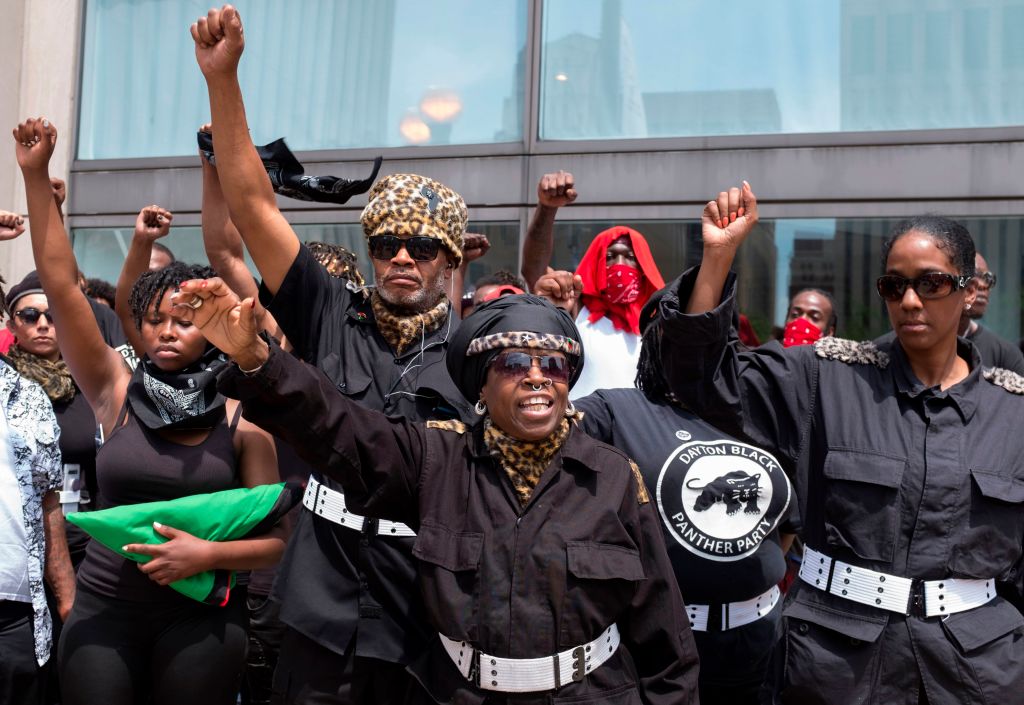
Source: SETH HERALD / Getty
In search of a way to connect with others, there was always the Oregon District or the Or-gon, as local Black folks often called it. We’d spend many weekends there in 2014. We would drive the 15 minutes on US-35, past the deadliest street in the city — Gettysburg Avenue — to get to Ned Peppers for my friend’s 23rd birthday party.
It was a gap year for me. I had graduated from NYU and moved back home after failing to secure a job in the industry. So there I was, dealing with the boredom that plagued much of my life before moving to New York City, only this time I could drink. The Oregon District had recently become a place to hang out in Dayton, with karaoke bars, The Masque, our first LGBTQ friendly club/bar that was also amazingly 18+ and Ned Peppers, a bar/club that hosted a giant dancefloor upon entrance and a long fully stocked bar that would charge you gratuity if you left your credit card overnight.
2014 was the last time I was at Ned Peppers. It was a happy memory. Now, that memory is clouded by the fact that five years later, nine people would be shot to death.
Dayton is a mixed city. Montgomery County happens to be one of the few blue counties in a state of neocons who spent time celebrating the arrival of Donald Trump for both his rally as well as when he visited the victims of the shooting.
When people imagine Ohio, they think cornfields, LeBron James, and guns — and for the most part that is correct. But I am also the Black daughter of a Black factory worker and a blind Black veteran. We’re one of the hardworking families that politicians refer to. And yet somehow, people often pretend that not only do we not exist but that we’re also not Black and couldn’t possibly be bumping elbows with the Klan on a daily basis.
And yet, we did. Yet, we do.
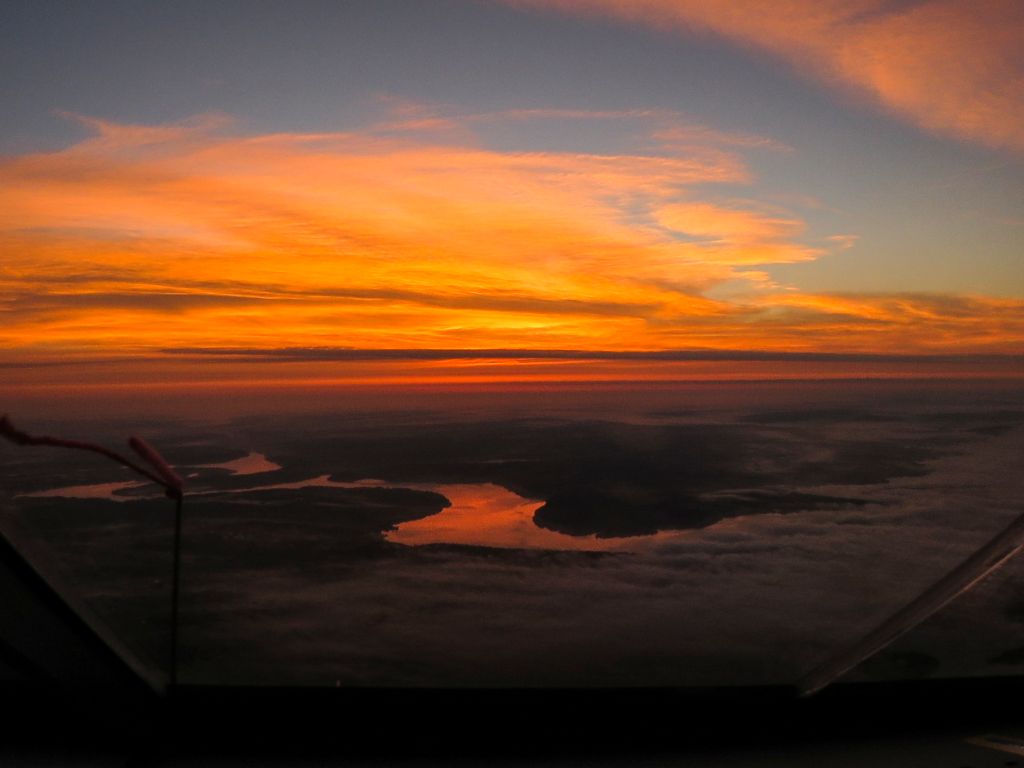
Source: Handout / Getty
Whenever I go home, I fly into Dayton International Airport. (Somehow we managed to steal the DAY abbreviation from Daytona, Florida.) The first thing that always greets me is Wright-Brothers paraphernalia. The airport mainly services businessmen who I guess sometimes do business-y things in Dayton but also welcomes many of us clichés who move to New York to get away from the boredom of small-town shenanigans. New York is my second home, and Dayton is and will always be my first.
The drive from the airport to Trotwood is short, almost a straight shot on I-70 toward Englewood, then a few country roads will land you in the small suburb of Dayton. It was suburbia in the sense of being a group of houses that all look alike. It was not a suburb in the sense that it has become the largest concentration of Black people I’ve ever seen in what structurally constitutes a suburb. Perhaps it is my own internalized racism that resists calling Trotwood a true suburb.
Perhaps it is a desire to want to distinguish this concept of Black suburbia from a “Leave It To Beaver” or “The Wonder Years” imagery. We weren’t the Huxtables and couldn’t quite call ourselves The Winslows since we were not from a city with a classic Black population. No one outside of Dayton would think to identify it as a Black city as fast as they might name Chicago, Harlem, or Englewood in California.
Google Maps still considers Trotwood its own city. It, however, autocorrects Kettering to Dayton.
Kettering is where my mom now lives. It’s about 35 minutes from the airport and instead requires travel across I-75, which is perpetually under construction. Kettering is for all intents and purposes a White suburb of Dayton. It is rare that I see Black people there, but given the ease with which my mother found a house to rent, the redlining attempts to segregate communities seem to be dissipating there.
Either that or landlords can no longer afford the loss in income as the population declines.
Dayton, like Los Angeles, always makes me think of driving. All those highways to be crossed in order to get to the suburban areas and commercial areas like the Dayton Mall, The Greene, Fairfield Mall. Then there was downtown, host of Sinclair Community College, and one of our only private colleges, University of Dayton. I was always baffled by people who attended the University of Dayton from outside of Ohio, but it did lend itself to creating a small semblance of diversity in a city that was mostly Black folk and white people fleeing to gated communities like Oakwood, ironically the birthplace of Stanford University rapist Brock Turner.

Source: Chris Hondros/Getty Images / Getty
Sometimes being from Dayton feels like what it must be like to be from the state of Florida. There’s national embarrassment to be had every day.
The suburbs were segregated, but everyone mixed downtown.
Further down US-35 exits in downtown took you to Wright-Patterson Airforce Base in Fairborn, and also Wright State University. In my mind, I hear myself saying everything is 30 minutes away from Trotwood, but that’s likely just because I was used to going 10 miles over the speed limit. My sister, however, loathed driving to any place that wasn’t within 15 minutes. So downtown was usually as far as she was willing to go for entertainment.
Blind Bob’s was where I’d spend winter with my best friend listening to local death metal bands that used to play at the now-defunct Gathering Grounds and The Attic, the birthplaces of relatively famous bands like Miss May I and The Devil Wears Prada. Just around the corner was Ned Peppers, the only place my sister was willing to go with us, as it was mixed but not “too white.”
Ned Peppers had become somewhat of a regular adventure for us that year. It was the place where my sister had run into her future baby’s father that sparked their on and off-again relationship. It was where my best friend and I would continue to be awkward Black girls and only dance when we thought no men were going to grossly appear behind us.
I wonder what the energy was that fateful early morning of Aug. 4. I wonder if Lois, who usually went by Lola, also wanted to dance without being accosted by men. I wonder if anyone felt unnerved — those gut feelings you can’t explain that make you think you should leave.
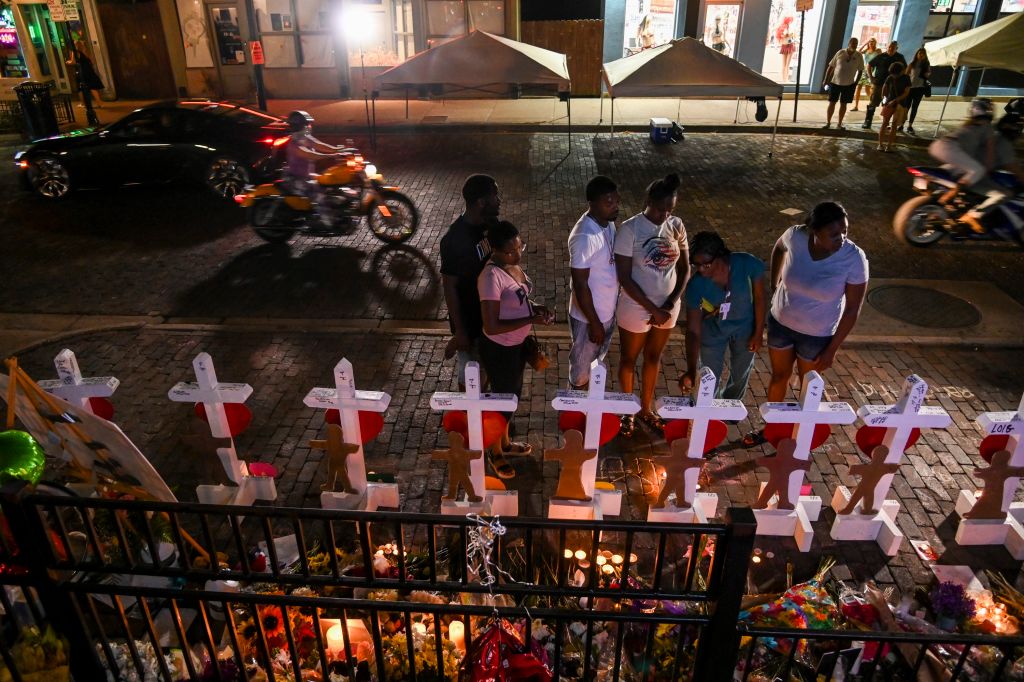
Source: The Washington Post / Getty
According to multiple sources, it now appears that the shooter was not a white supremacist, but definitely a misogynist with an unhealthy obsession with mass shootings. Ohio is an open-carry state. And while guns make me uncomfortable, I’ve seen them enough to not want to call 911 immediately like my fellow New Yorkers often do.
I don’t know if this is a good thing or a bad thing, but it’s been trending closer to the latter upon the realization that a white man with a gun is particularly dangerous toward women and minorities. Among the shooter’s victims that night was his sibling, Jordan Cofer (who was known in the transgender community to be a transgender man, but news reports continue to refer to him as his dead name), and six Black people including Lois, Monica Brickhouse, Beatrice Warren Curtis, Derrick Ford, Thomas McNichols and Saeed Saleh.
Indeed, considering that of the total gunshot victims reported that night were women, misogyny may have been his driving ideology.
Does it matter if the shooter was a white supremacist when we know that white men with guns are the main perpetrators of mass shootings? And it need not be said again that Black people are also in constant danger of being shot by white men with police badges.
Other lives were lost that morning: that of two young white men named Nicholas Cumer and Logan Turner. But it somehow doesn’t feel like a coincidence that the shooter was able to, allegedly without thinking, kill more Black people than white and injure more women than men in the process.
All of their blood, nonetheless, is on the hands of a nation that continues to think there is an impasse to be had about keeping us armed against the government while also protecting those of us who would never think to purchase a gun for any reason.
I say this as a so-called army brat from an open-carry state. I say this, knowing of the young woman with the AR-10 outside of Ohio’s Kent State University who has continually been dragged on social media I know these gun nuts. I’ve been in their neighborhoods and had the police called on me for being a “stranger” in their gated white communities.
Does motivation really matter anymore? At what point and to what length will we go to understand the ideologies of mass shooters before we think maybe we should do something about their access to guns in the first place.
Ohio is full of this contradiction: Black and Brown citizens who struggle to thrive and then find themselves forced to defend their city against a national conversation that paints them with the same brush as their white counterparts.
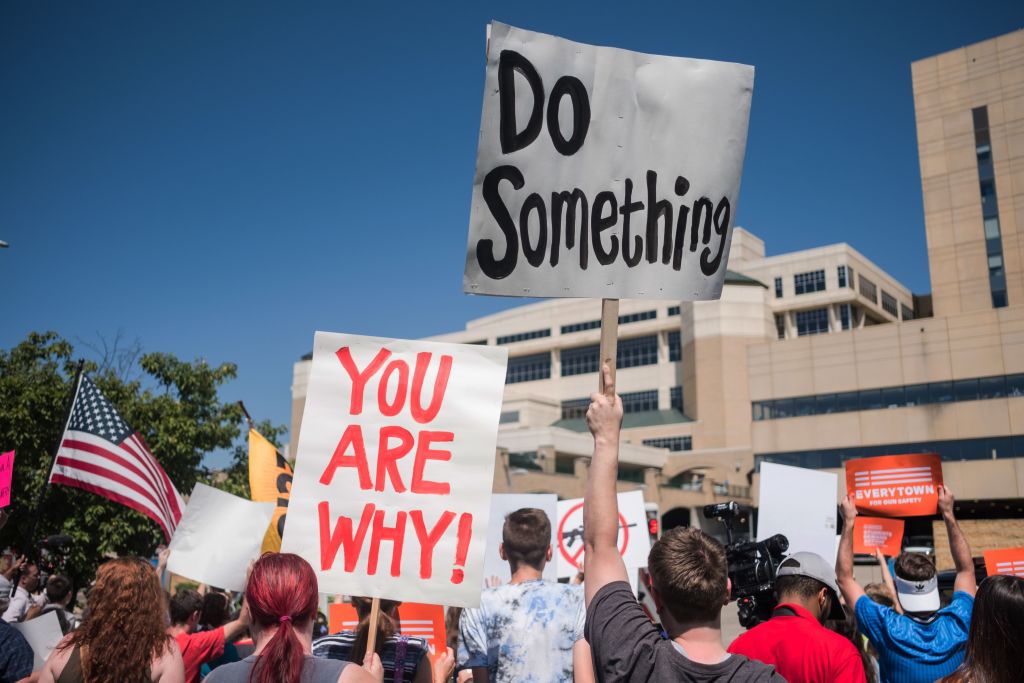
Source: MEGAN JELINGER / Getty
President Trump turned his visit to Miami Valley Hospital into a campaign ad. Despite the fact that six Black people were killed and that we represent a sizeable portion of the population of Dayton, his campaign ad features just two Black people.
Where did all the Black nurses who helped my sister deliver my niece in 2017 disappear to? All of the Black clerical workers? The Black janitors?
If I had to guess — and I don’t blame them — they fled, lest they be in any way associated with a president who has continued to encourage and enable the anger that has fueled White men with guns to seemingly become deadlier than they ever have been.
I have voted absentee in two separate election cycles now in order to protect my family that still lives there. Technically, I still live there, since, as of my father’s last will and testament, our family home will belong to me. I have voted and returned multiple times per year, reminding myself each time I get off the plane and ride down I-75 that I’m from Dayton and no matter how much construction and destruction takes place, it is the city that allowed me to grow into the person who I am now.
I’m a New York transplant by way of Dayton, Ohio, and I am a Black woman from the Midwest.
These identities by landscapes mean things. And the face of Dayton is not a sea of white faces happy to see Trump and White supremacists. It is a city that protested a KKK rally and hosted more than 120,000 people who voted for Hillary Clinton in 2016. It is where my Black family branched out, lived, invested in their communities through small businesses and birthed a new generation of nieces and nephews who will go on to attend Dayton Public Schools as Black children.
The city belongs to them, and no matter the destruction, they survive. No matter the opioids, the loss of industry jobs, and now this mass shooting, they are still here.
I am still there and here.
I see them.
READ PAST INSTALLMENTS OF THE ONE STORY HERE.
You need to see them too.
Dear Dayton, Your Blackness Will Not Be Erased was originally published on newsone.com




